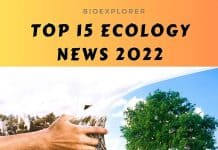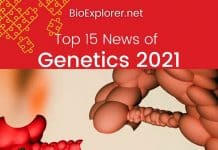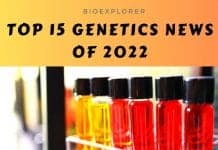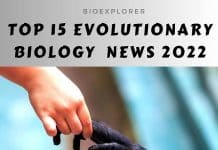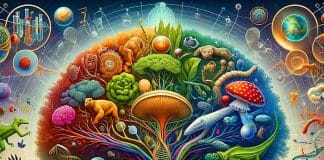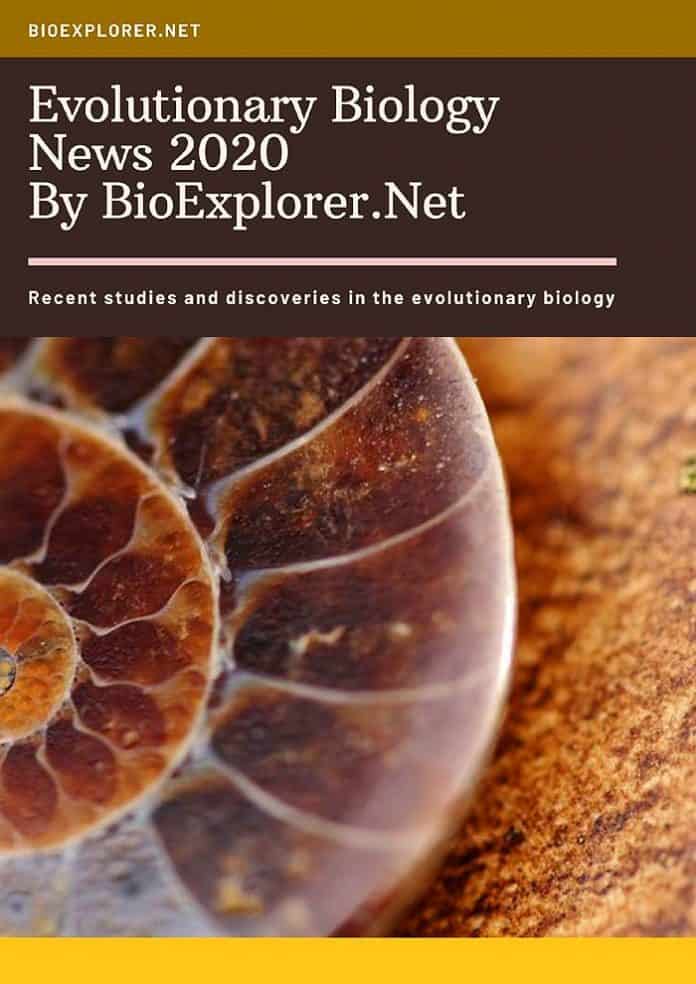
Evolutionary Biology News of 2020: Despite the isolation enforced by the pandemic, research in evolutionary biology thrived in 2020.This year, multiple fossils belonging to various types of animals were found.
Top Evolutionary Biology News of 2020
From a new species of flower to new dinosaurs and bipedal crocodiles, paleontologists improve our understanding of life in the prehistoric path.
Researchers also have managed to find essential facts about human evolution as well. Most notably, current research shows that evolution still goes on – and in some species, it is driven by parasites. We presented the most fascinating evolution news in 2020.
1. New prehistoric flower species discovered in amber [USA, February 2020].
A team of paleobotanists from the Oregon State University has discovered a unique amber in Myanmar in the area known to geologists as the West Burma Block. The amber has preserved one flower, aged approximately 100 million years old. There were several interesting facts about this finding:
- Based on the dating techniques, the flower existed in the early Cretaceous period, known for the emergence of flowering plants.
- The flower preserved was male and likely a part of a larger complex flowering plant.
- Based on the anatomy of the newly found plant, the paleobotanists have deduced it was related to the order Laurales that contains various tree-like and shrub-like plant species.
- This fossil plant was classified as belonging to an entirely new genus.
- As the approximate date of appearance of flowering plants on Earth is known, this finding also helps to date with more precision the tectonic changes that took place in this area in the distant past.

2. Ancient crocodiles were bipedal – new analysis of fossilized tracks points to the existence of bipedal crocodile relatives [USA-South Korea, June 2020].
Not all information about ancient animals is gained through bones. Sometimes, the animals of the deep history leave tracks that endure millions of years.
Recently, in South Korea called Jinju Formation, multiple tracks left by Mesozoic lizards, frogs, and other animals were discovered. The team of paleontologists from the University of Colorado Denver, together with their South Korean colleagues, have made another exciting discovery:
- The team has found new tracks that had features typical for crocodiles.
- The measurement of tracks shows that the animal that has left them was around 3m in size.
- There were tracks of hind limbs, but not the forelimbs, which made the scientists conclude that the animals used to walk on two legs, unlike modern crocodiles that walk on all fours.
- The species was named Batrachopus grandis. This crocodile ancestor was most likely terrestrial.
- The existence of multiple parallel tracks shows that these animals used to travel the land in social groups.
This discovery is the first solid evidence showing that crocodile-like animals could be terrestrial and bipedal in the Cretaceous period. Notably, this animal co-existed with other giant reptiles, including dinosaurs of considerable size.

3. Looking into the mouths of ancient fish helps us understand how teeth have evolved [Sweden, December 2020].

If one has ever touched a shark or a ray, they may have noticed that their skin is rough. Some of these fish even have tough spikes or plates on their bodies. These structures are called dermal odontodes or dermal denticles.
There is an ongoing debate about whether these dermal structures are evolutionarily related to teeth. To solve this question, a team from the University of Uppsala, Sweden, has used novel techniques to analyze the development of teeth in an early bony fish, Lophosteus superbus.
- Scientists have used the jaw of the Lophosteus superbus and scanned it with the help of a technique called submicron X-ray imaging.
- This approach has allowed them to see structures that are around 0.001 mm in size or even less.
- With the help of an X-ray, it is possible to see odontodes that are only developing.
- Scientists have found that dermal odontodes and the odontodes that would eventually become teeth develop similarly.
- At a later stage, these structures change differently, probably influenced by chemical signals.
- Some develop into teeth-like skin structures, while others develop into teeth.
- Unlike the previous scale-to-teeth hypothesis, scientists have deduced that dermal odontodes and teeth have a common ancestor. Still, these structures develop independently based on the chemical signals present.

4. Anomalocaris was the first Hawkeye: new Anomalocaris fossils show these animals’ well-developed vision [Australia, December 2020].
Around 600 million years ago, the period termed the Cambrian explosion took place. During this time, most of the current groups of animals have arisen. Moreover, this period was noted by the emergence of unique life forms that are no longer present. Among those, radiodonts, represented by the famous fossil Anomalocaris, are of special interest.
Fossils from the Cambrian explosion are pretty rare. Most of these ancient animals had soft bodies. They, therefore, had few structures that could get mineralized and preserved in sediments. That is why a recently discovered Emu Bay Shale in Australia is somewhat of a treasure trove for paleontologists. The Shale has yielded a lot of new information:
- There were fossils with eyes that belonged to the genus Anomalocaris found in the area.
- Two distinct types of eyes were found, one belonging to the species Anomalocaris canadiensis. In contrast, the other belonged to a newly described species, Anomalocaris briggsi.
- Eyes in both animals were compound and consisted of multiple lenses, similar to modern insects.
- The eyes of A. briggsi were large, up to 4 cm in diameter, and situated inside the skull.
- The eyes of A. briggsi were similar in structure to those of prawns that live on the sea bottom and can hunt in murky, unclear waters.
- The eyes of A. canadiensis were smaller, around 3 cm in diameter.
- These eyes were placed on stalks and had more than 24000 lenses each.
- A. canadiensis is thought to be an active predator hunting in the sea and therefore needs eyes that can quickly locate prey.
- The new findings show how diverse visual adaptations in ancient invertebrates were even 500 million years ago.

5. Dinosaur eggs were soft – a novel approach to fossil analysis settles the debate about shells of dinosaur eggs [USA, June 2020].
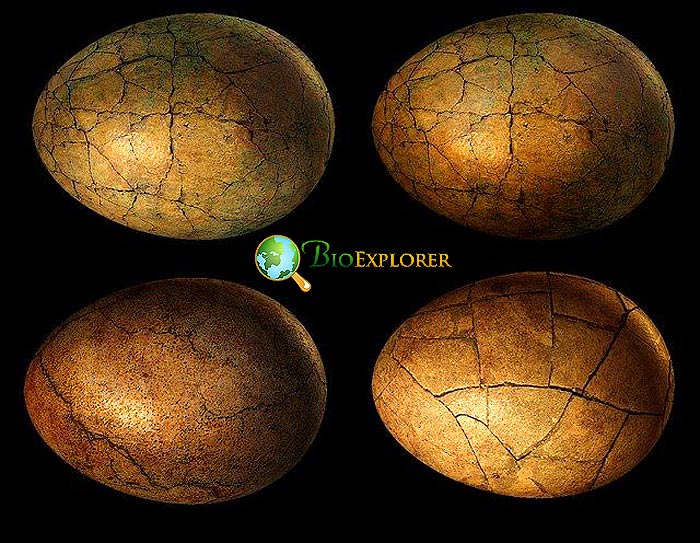
While we have a sufficient amount of dinosaur skeletons, the specialists do not know much about early dinosaur development, as fossilized eggs are rare. Recently, a collaboration between the American Museum of Natural History and specialists from Yale University has helped the scientific community to gain some new, unexpected knowledge about dinosaur eggs:
- As crocodiles and birds are known to lay eggs with hard shells, it was thought that dinosaurs probably produced similar eggs.
- The scientists decided to test this hypothesis and analyze the fossilized eggs of Protoceratops and Mussaurus.
- The research involved performing multiple tests that allowed to reconstruction of the chemical composition of eggs.
- The researchers also compared the obtained data with similar information gained from the eggs of crocodiles and birds.
- The research has shown that the eggs of both dinosaurs had different structures compared to the hard-shelled eggs of birds and related animals.
- Dinosaur eggs resembled the eggs of modern turtles the most and had a similar composition.
- Dinosaurs probably hid their eggs in sand or sediments, as modern turtles and reptiles do.
It would probably be necessary to collect more fossilized eggs from different dinosaur species to better understand how hard-shelled eggs evolved in birds and reptiles.

6. Early herbivorous dinosaurs had well-developed brains [Brazil, November 2020].
Several years ago in Brazil, a new dinosaur skeleton was found in the Santa Maria Formation area, dated around the Carnian subperiod of the Triassic. The skeleton was 237-228 million years old and belonged to a small carnivorous dinosaur named Buriolestes shultzi.
This finding is considered to be one of the earliest ancestors of large herbivorous dinosaurs. As the paleontologists managed to find several skeletons since then, including an almost entirely preserved skull, the attempt to reconstruct the brain of this ancient dinosaur was made:
- Based on the structures of the skull, a 3D model of the B. shultzi brain was made.
- It was found that Buriolestes had a well-developed cerebellum – the part of the brain responsible for balance and movement.
- The parts of the brain responsible for sight and sense of smell were well developed, too.
- The specialists also calculated the brain and body size ratio.
- They have found that, compared to overall body size, Buriolestes had a noticeably big brain.
- Though Buriolestes was apparently a predatory animal, its brain was still smaller than predatory dinosaur species of other periods.
- Unlike Buriolestes, herbivorous dinosaurs that have evolved later completely opposite features had smaller brains, less developed cerebellum, sight, and smell.
- Apparently, the ratio of all brain parts and overall brain size have changed as this group of dinosaurs shifted from active predatory lifestyles to eating plants that require less energy and movement.
This discovery provides us with a better understanding of the life and behavior of the earliest dinosaurs.

7. Humans coexisted with Neanderthals for a long time, a study finds [Germany, Bulgaria, May 2020].
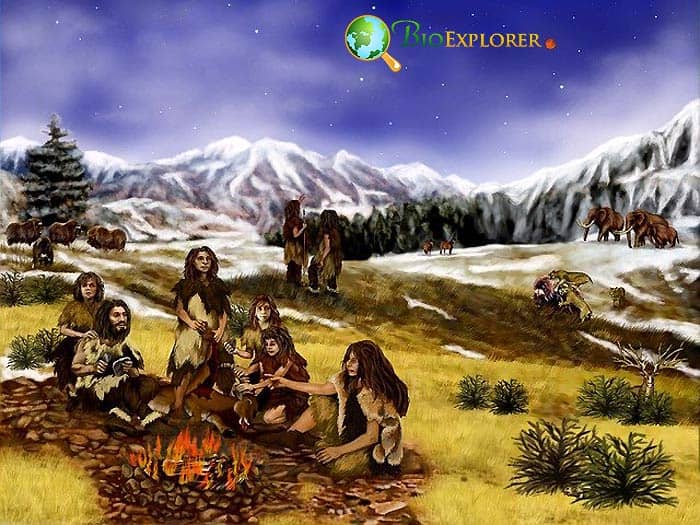
According to modern scientific views, it is thought that our species, Homo sapiens, came to Europe around 40, 000 years ago. By this time, Europe had its own hominins – Denisovans and Neanderthals. With time, only H. sapiens remained, replacing the native inhabitants. Still, our species have coexisted with Neanderthals for some time. Unfortunately, the length of this period of coexistence is still undefined. A new discovery in Bulgaria may help establish the time limits for H. sapiens to spread in Europe:
- A team of paleoanthropologists from the Bulgarian National Institute of Archaeology with the Museum and Max Planck Institute for evolutionary anthropology, Germany, have found human remains in Bacho Kiro Cave, Bulgaria.
- The findings consisted of teeth and bone fragments.
- The researchers could extract DNA from the fossils and establish that the remains belonged to H. sapiens.
- The remains were dated around 45, 000 years ago, pointing to the earlier presence of H. sapiens in the region.
- It was known that Neanderthals also had a settlement in the cave around 50, 000 years ago.
- Together with bone remains, multiple jewelry-like items were found, such as bear teeth pendants made of ivory and talons of various animals.
- Similar jewelry was found in Neanderthal settlements, produced significantly earlier.
- These findings show that H. sapiens and Neanderthal groups probably co-existed for a prolonged time and likely influenced each other.
Moreover, a newer study published in April 2021 has shown that both groups have probably mixed. Individuals with likely both Neanderthal and H. sapiens ancestry were found in the same cave.

8. Asia had their own ancient monkeys: unique monkey fossils found in China [China-USA, September 2020].
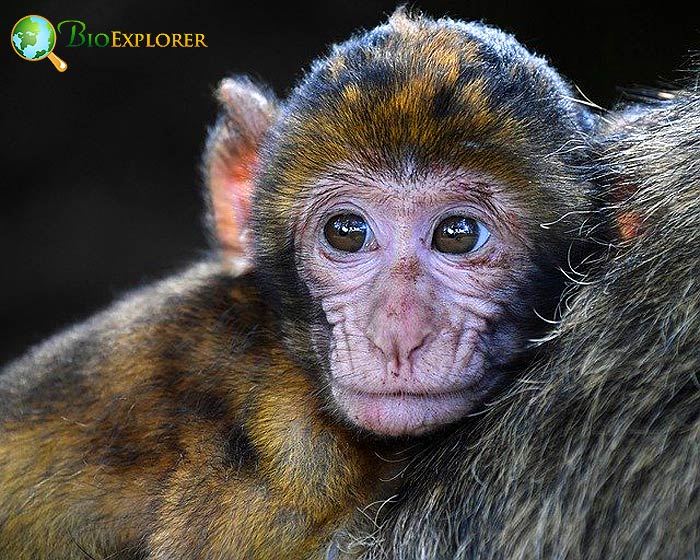
An international Chinese-USA team was excavating the Shuitangba lignite mine in Yunnan province, China. They have found several fossils remains – a piece of a jaw, a femur bone, and a heel bone, all very close to each other. A thorough analysis of the findings has shown that:
- The bones were dated at approximately 6.4 million years old.
- The bones belonged to a monkey species, Mesopithecus Pentelic.
- Previously, this species’ fossil was found in Europe.
- Some features of the Mesopithecus anatomy resembled modern Asian monkeys, which led the scientists to believe that this species was probably their distant ancestor.
- Interestingly, Mesopithecus in Asia has probably co-existed with apes.
- This ancient monkey lived and fed in trees growing near freshwater areas.
- Mesopithecus lived in the same period as giant otters and swamp rabbits.
- This is the first evidence of this species in Asia and the first evidence of apes and Mesopithecus being present in the area at this period.

9. Protect the brain to live on land: research on living fossils allows modeling the changes happening million years ago [UK-Canada-Australia, September 2020].
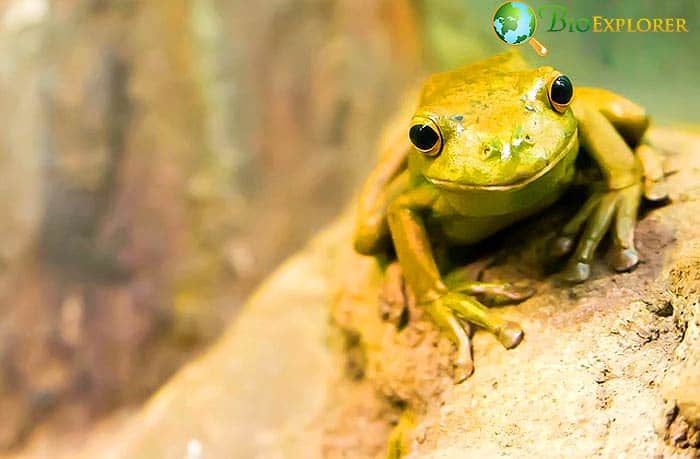
As one may discover in school, the first amphibians evolved from fish. These ancient fish have evolved different adaptations that allowed them to breathe and move on land.
Their fins have slowly changed into leg-like appendages. These animals have evolved primitive lungs that allow them to breathe air. All these adaptations known to scientists do not include changes in the skull or the brain. This is due partly to the fact that brain structures are rarely preserved in the fossil record.
An international team of paleontologists has decided to focus on living organisms instead of fossils:
- The researchers have chosen several animals for comparisons:
- Coelacanths
- Lungfish
- Salamanders
- Coelacanths and lobe-finned lungfish are considered some of the oldest species on Earth, closely related to the first amphibians.
- Salamanders are amphibians whose evolution dates back around 230 million years ago.
- The researchers have employed several approaches, such as micro-CT and MRI, to build precise 3D models of the skulls of these animals.
- Using the models, the researchers have evaluated brain sizes in all the species and the changes in their skulls and jaws.
- The coelacanth had the smallest brain among all the animals tested.
- The salamanders and lungfish had brains of similar size.
- The scientists also noted the changes in jaw muscles in lungfish and salamanders.
- The researchers proposed that the reinforcement of muscles of the jaw served two purposes:
- Adaptation to new, land-appropriate feeding strategies.
- Better protection of the brain on land.
- As these changes were noted in lungfish, it could be suggested that they were “prerequisites” that helped ancient lungfish ancestors adapt to living on the land better.

10. Parasites can influence birds’ romance: swallows’ mating habits can be influenced by parasites they have, a study finds [USA-Israel- Czech Republic, May 2020].
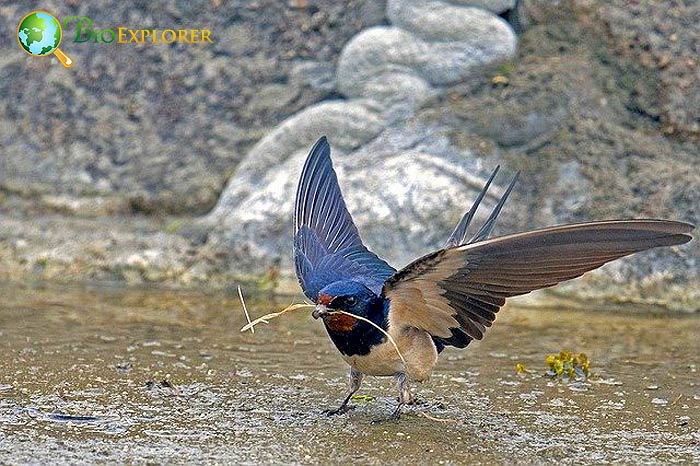
Theodosius Dobzhansky Prize from the Society of the Study of Evolution is awarded to promising young evolutionary scientists. In 2020, an Honourable mention for this prize was awarded to Amanda Hund, University of Colorado. Dr.Amanda Hund’s research is focused on how parasites can influence the evolution of their hosts.
In her recent study, Dr.Hund and Israeli and Czech scientists have compared three barns swallowing subspecies with different mating signals.
- The researchers have observed mating behavior in male and female swallows in each subspecies.
- The scientists also evaluated the birds’ number of parasites and their species.
- They have established that certain parasites can have a detrimental effect on the health of male swallows.
- These health changes could be detected by female birds during mating rituals.
- In each subspecies, females preferred the signals produced by males with a specific type of parasite.
- Changes in mating rituals can lead to the formation of new species within a population.
- Therefore, certain parasites can influence the development of new species through influence on mating behavior.
- This new study shows the unexpected role of parasites in the evolution of birds.

This list represented just the most astounding findings in 2020. Some of the studies show similar things. For example, another research has shown that three relatives of Australopithecus used to live in the same region simultaneously.
Studies of amber have revealed prehistoric wasps hunting on cockroaches and changes in the food beetles used to eat in ancient times. Moreover, the evolution continues -as illustrated by changes in modern insects over time.
By understanding the life of ancient periods, we may predict essential changes in modern animals and plants – that is why evolutionary biology is both exciting and crucial for our long-term survival.




